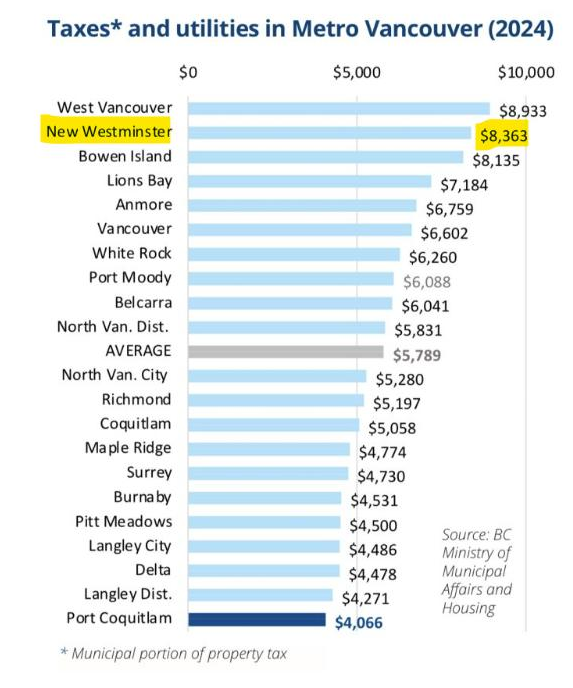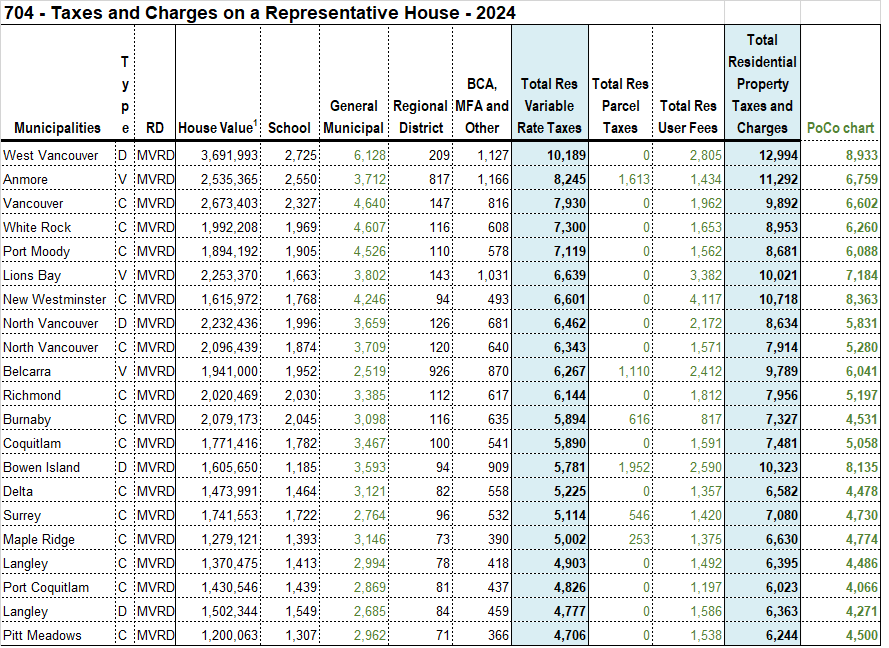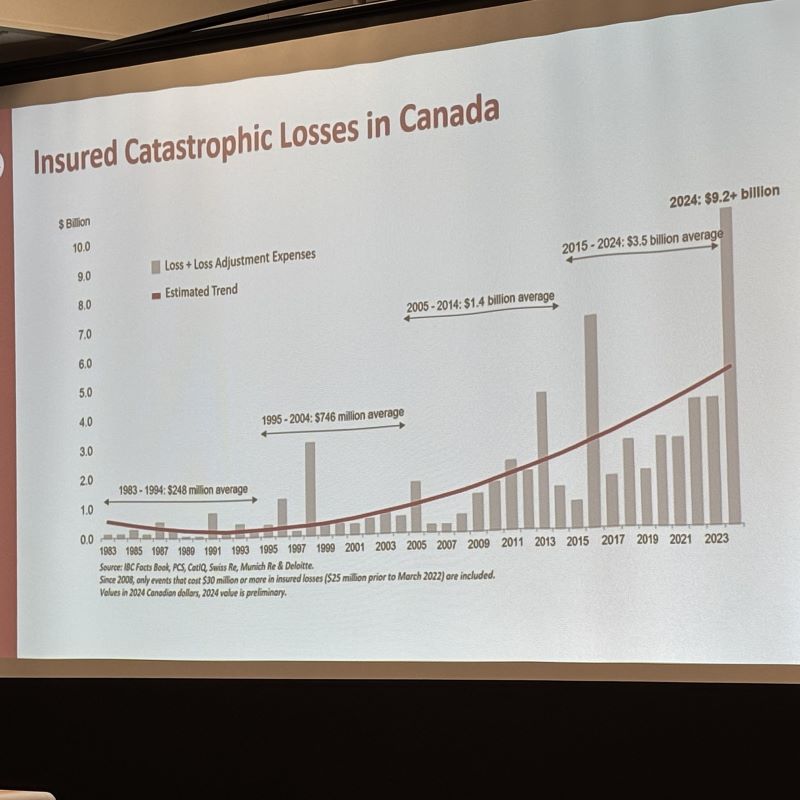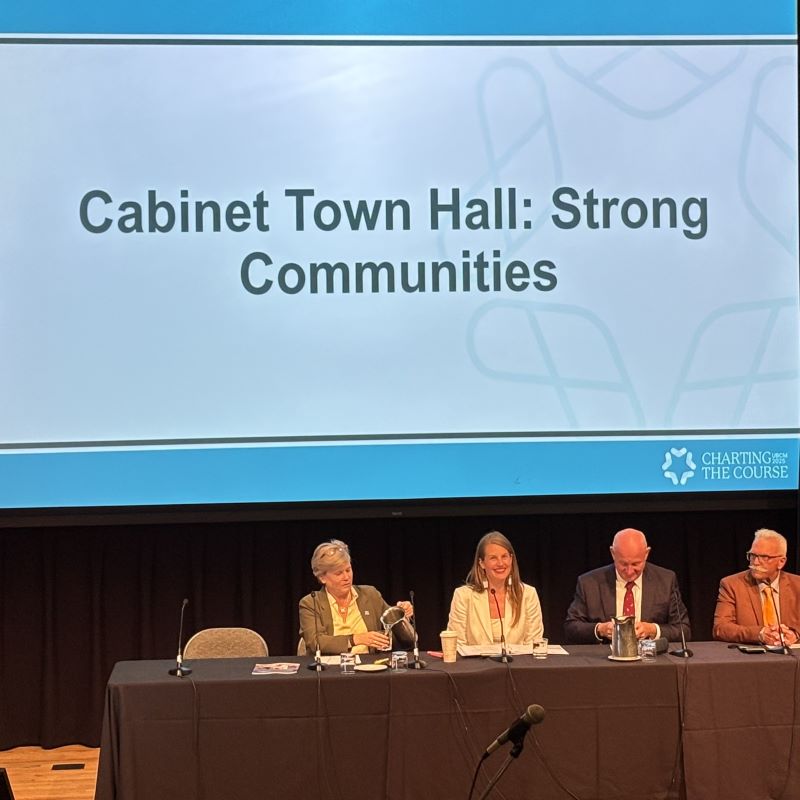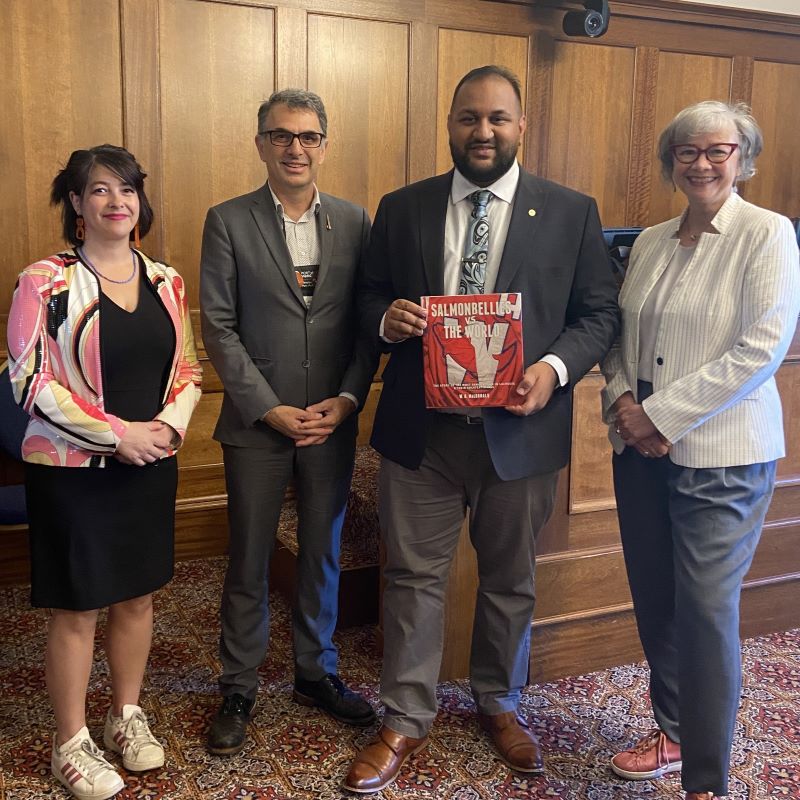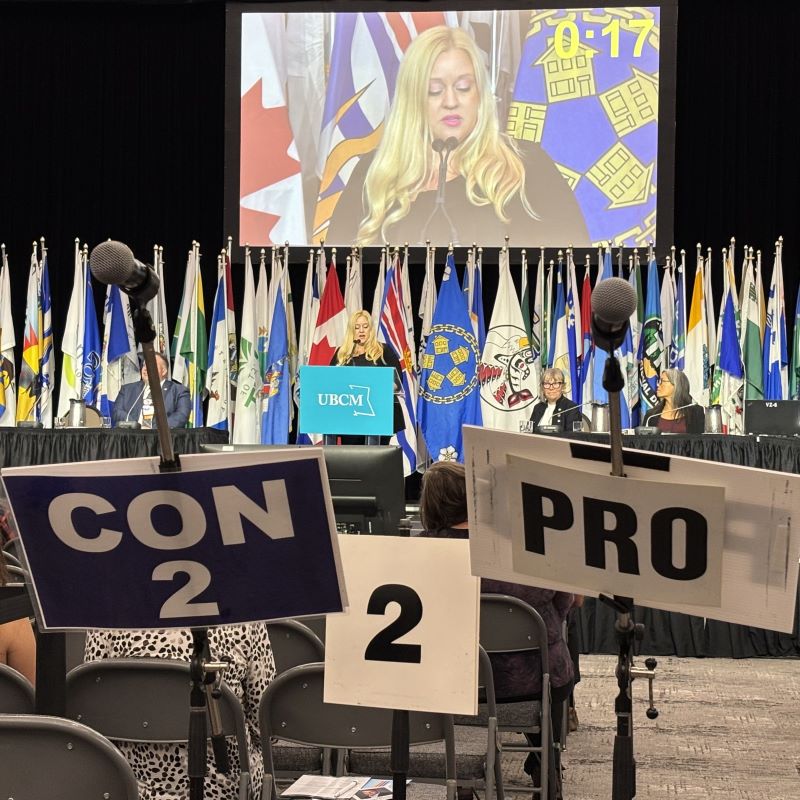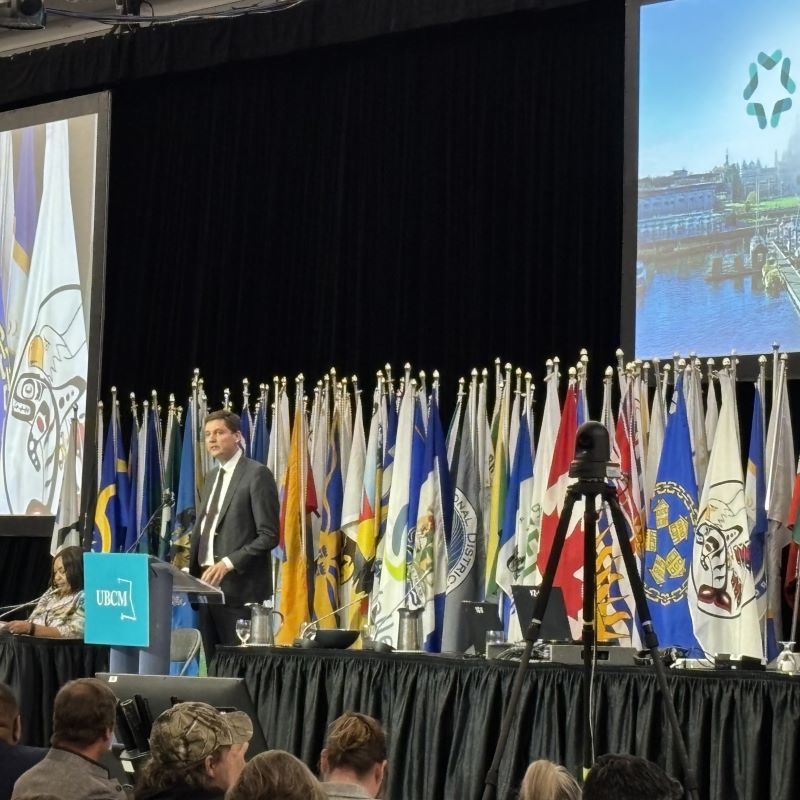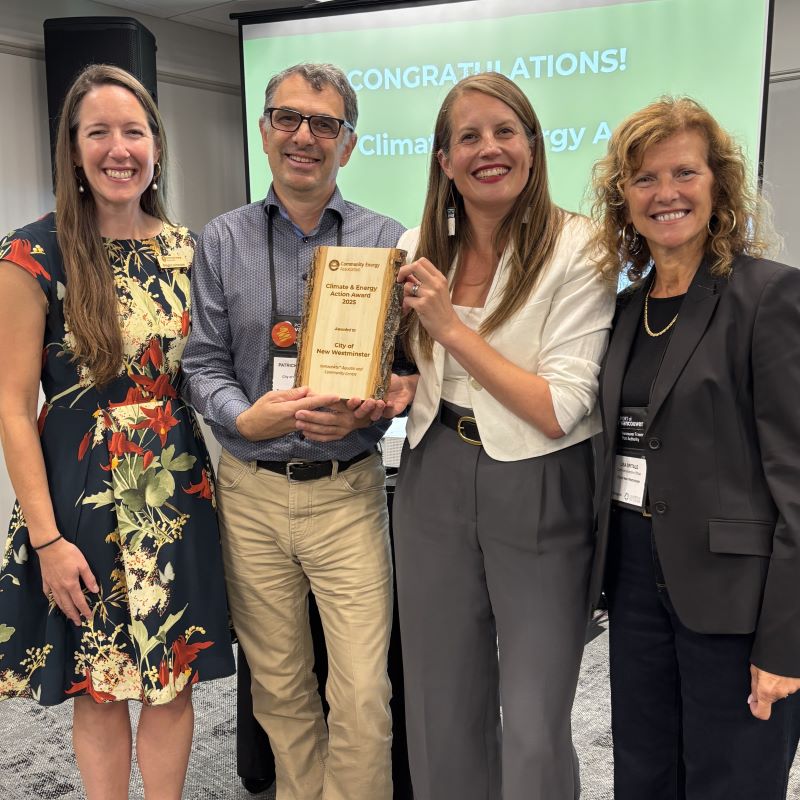Whew! Last meeting of 2025 had an epic agenda, even for the end of the year meeting. I’m going to try to keep these reports short, and come back in future post to unpack a bit some of the meatier items.
The following items were moved On Consent:
Food Security and Systems Plan
Food security is a challenge in New West, as it is across Canada – Nationwide 25% of Canadians experience food insecurity, this should be a national shame for a country as rich as ours. Though we have several food bank service providers, the service is strained, and volunteers and non-profit capacity is at its limit. Some programs are winding down or consolidating for lack of resources, and the need is not going away.
Staff have developed a Food Security and Systems Plan to better support collaboration among local and regional providers, and to seek senior government support. This was developed over 16 months through working with Fraser Health, the homelessness coalition, the business community, faith-based and non-profit organizations, with financial resources provided by the BC Healthy Communities Fund. There are 40 actions identified here under 6 different themes, and this report asked for Council’s support to move ahead with implementation.
Indigenous Relations Response to November 3, 2025 Council Motion
This is an information report responding to a Council motion to get an update on our Reconciliation actions, specifically our approach to UNDRIP, the Calls to Action of the TRC Commission report, and the Calls to Justice of the MMIWG report. In short, the report provides a framework for better accounting for the work done, and the work we have yet to do.
Issuance of Development Variance Permit DVP00750 for 1125 Fifth Avenue
As mentioned last meeting, this 34-unit strata project in the Brow of the Hill was given rezoning in 2016(!) and a Development Permit in 2018(!) and is still an empty lot, demonstrating that municipal approvals are not always the thing slowing down new housing development. We have updated some parking requirements since then, but adopting those would require a complete redesign of the building. As it appears the builder finally wants to get building with what is approved, so we now need to give them a variance to allow the next steps to proceed. This is the decision to issue the variance approved in principle last meeting.
Officers Establishment and Indemnity Bylaw No. 7175, 2007, Amendment Bylaw No. 8565, 2025 and Delegation Bylaw No. 7176, 2015, Amendment Bylaw No. 8566, 2025 for Consideration of First, Second and Third Reading
Among City staff, some are “Officers” in that they have specific legislated authority under various Provincial Acts, and some had specific delegated authority under City Bylaws (they can make decisions without needing to ask Council). This Bylaw names those positions and limits those authorities, and we are making some relatively minor amendments to update it.
Rescission of Third Reading of Development Cost Charges Bylaw No. 8327, 2022, Amendment Bylaw No. 8539, 2025
Back in August we gave third reading to a new DCC Bylaw following changed made by the Province on these funding models. We are required us to submit the Bylaw to the Ministry for approval before adoption. The inspector didn’t like that we used the words “Protective Services”, and would rather we use the terms “fire protection” and “police”, and split up our Protective Service DCC between the two. So we are rescinding the Third reading and resubmitting with this language change.
Rescission of Third Reading of Development Cost Charges Protective Services Reserve Fund Establishment Bylaw
Because of the above, we need to do the same with the name of the Reserve Fund we set up and make it into two separate reserve funds.
Solid Waste Master Plan
Solid Waste is complicated. When I was a kid, we threw glad bags in cans and it all went to an open landfill on the edge of town to feed the bears. Today we have multiple streams for economic and environmental reasons. Landfills are expensive and far away, so we try to reduce what goes there, preferring to recycle organic materials into compost and biofuel, while Extended Producer Responsibility programs mean recyclable plastic, papers and metals need to go to special processing facilities. And how that waste is separated and collected varies depending on whether you live in a single family home, an apartment of townhouse, or by the size and scale of your business. It’s complicated, and becoming more expensive.
The City has undertaken a comprehensive review of its solid waste program, and has developed its first Solid Waste Management Plan to help us prioritize and coordinate capital investment and better allocate resources and service levels. And we even had hundreds of New West residents engage with us through this planning!
The resultant plan has 15 recommendations over 5 focus areas, and implementation will see several opportunities for public discussion about waste management and for Council to provide some input or commitment of resources. I really enjoyed how the report included rationale and case study analysis of each of the 15 recommendations – we are not re-inventing the wheel here, but are building on what has worked in other jurisdictions. Each also comes with a qualitative measure of economic, environmental, and social impacts/costs of each recommendation to help Council see how the prioritization was set. This is a good report, and I’m looking forward to the plan implementation.
Subdivision and Development Control Bylaw No. 7142, 2007, Amendment Bylaw No. 8564, 2025
This Bylaw sets the standards for land subdivision and servicing these subdivided lots. Industry standards for these bylaws have evolved, as have Provincial regulations, and our Bylaw needs an update. These are mostly administrative, though some standards are also being updated, and that gets real technical real quick (runoff coefficients! Fireflow requirements!).
Zoning Bylaw No. 6680, 2001, Amendment Bylaw No. 8543, 2025 [Vape Stores]
These are the first three readings of the updates to the Zoning Amendment Bylaws to more strictly regulate Vape Shops as discussed last meeting
We then addressed these following items that were Removed from Consent for discussion:
Sixth Avenue and Second Street Road Safety Study
This intersection in Queens Park has received a lot of attention over the last year, as cars keep crashing into each other there. According to our recent intersection Safety Study, it is only the 57th most frequently crashed intersection in the City, with no history of vulnerable road user crashes, meaning it wasn’t prioritized for upgrades. It already has pedestrian controlled stoplights, stop signs, four marked crosswalks, and is in a 30km/h school zone. Some increased safety measures were installed in 2019 and 2022 as well.
After all that, there was still community concern, so staff undertook a detailed safety study, including tracking near-miss and traffic behavior analysis. No surprise, behaviors like speeding, illegal parking, and “aggressive turn movements” are major risk factors, but there are also some engineering challenges – sightlines, the road is too wide, and driveways of an adjacent business and a bus stop are too close to the intersection. Staff are recommending changes, some quick and relatively cheap including “curb extensions” that will no doubt be universally beloved (/s), with eventual migration to a fully signalized intersection, which will cost about $1.2 Million.
Budget 2026: General Fund Five Year Capital Plan (2026 – 2030) and Funding Strategy
There are multiple steps to our budget process, and we do this all transparently at every step. We have had previous reporting on the proposed capital plan for the year ahead, and need to fit that into a 5-year capital plan to meet provincial reporting guidelines, and we need to outline what parts of that will be funded by grants, reserves, or debt.
Of course planning capital spending 5 years down the road is in many ways educated guesswork, as we don’t know where the global or local economy will be 5 years from now, or the cost of capital construction (which as we learned in recent reporting, has increased much. Much faster than “CPI” inflation over the last decade). However, we do know what we need to build, as we have advanced Asset Management Plans and clear priorities for new assets.
There is also an important nuance in here that we cannot apply for senior government or other grants, or even spend reserves drawn from development contributions, without the project being included in a Capital plan first. So some of these projects are “aspirational” to get us ready for when funding opportunities arise. We still need to have a viable funding plan for 5 years in the future, in case none of that senior support arises. That means we need to anticipate borrowing or other methods to pay for the infrastructure we need, but does not commit us (of future councils) to borrowing in the future. We are also now starting to extend our capital investment planning to 10 years (longer than required by legislation) in order to set up future Councils for success in asset renewal.
There is a LOT here (492 lines in the spreadsheet if you want to go line-by-line) so I will follow up with more detail in the new year.
Our City, Our Homes: Implementation of Provincial Housing Legislation – Bylaws for First and Second Readings
The Provincial housing regulations of last year and our Housing Accelerator Fund commitments to the Federal Government all come together as a suite of Official Community Plan and Zoning Bylaw updates, which we will be taking to Public Hearing early in the New Year. For logistical reason, these are split into two broad categories, this first one covering the Transit Oriented Development areas resulting from Bill 47 and new Affordable Housing measures to reduce regulatory barriers to affordability within those areas, and changes to the OCP to incorporate the findings of the Interim Housing Needs report as required by Provincial Regulations.
Council unanimously agreed to move forward with the framework as presented back in our October 27 workshop, after more than a year of work by staff, multiple Council meetings, and a long and multi-faceted public engagement process.
I’m going to hold off on more comment about this until the Public Hearing in January to respect the process. C’mon out and tell us how you feel!
Our City, Our Homes: Implementation of Townhouse and Affordable Housing Accelerator Fund Initiatives Bylaws for First and Second Reading
This is the second part of those OCP and zoning changes that support townhouses and broader Affordable Housing acceleration city-wide. Much like the above item, I’m going to hold off on more comment about this until the Public Hearing in January to respect the process. C’mon out and tell us how you feel!
Response to Council Motion: “Inventory of Municipal Arts and Culture Indoor and Outdoor Spaces”
This is a report back on a Council motion to provide a clearer inventory of Arts spaces in the City. This is a preliminary inventory of City-owned indoor and outdoor places that are available for formal programming, and it is a lot of them, along with a list of non-City and private spaces available for programming events.
Response to Council Motion: That the Motion Received by Council from the Community Heritage Commission Regarding an Updated Mandate and Scope of Authority be Referred to Staff for Consultation with the Commission Chair and Subsequent Report Back to Council
There was a lengthy recommendation brought to Council from the Community Heritage Commission back in November that appeared to massively expand the mandate of the commission, in some areas that made sense, and some others that look logistically (if not legislatively) difficult to imagine. In the strictest language of the motion, it looked like a massive bundle of red tape that would take significant city resources to manage. Council in its wisdom referred this back to staff for a bit of analysis and to recommend a path of how to evaluate what is a Terms of Reference Change and what would require the re-writing of several Bylaws in the City. This report provides that path.
In short, staff is going to work with the CHC to undertake a community consultation and review its Terms of Reference, and make recommendations to Council some time next year based on the result of that review.
We than had one Motion from Council:
Provincial Referendum on Selection of Metro Vancouver Regional District Board of Directors
Submitted by Councillor Fontaine
BE IT RESOLVED THAT the Mayor write a letter on behalf of Council to the Premier requesting the provincial government take the necessary steps to undertake a referendum during the 2026 civic election on a new and more accountable governance model for Metro Vancouver which would include an option to:
1. Directly elect the Metro Vancouver Board of Directors; and
Significantly reduce the size of the Board of Directors by utilizing a modernized weighted voting model
BE IT FURTHER RESOLVED THAT staff be directed to draft a motion which would be submitted to the Lower Mainland Local Government Association seeking their support for this initiative
BE IT FURTHER RESOLVED THAT the Mayor write to the Premier requesting that as part of the 2026 Budget he immediately provide the necessary funds and expand the mandate of BC’s Auditor General to include Metro Vancouver and all municipalities in the province.
This is a motion I spoke strongly against, as it seems completely bereft of any understanding of the current and historic governance of Regional Districts, of the governance review work at MetroVan being led by Vancouver Councillor Lisa Dominato, and seems to offer a solution that will do nothing to help any of the current challenges at Metro Van.
As a wise man once said, “For every complex problem, there is a solution that is simple, neat, and wrong” This seems to be that kind of solution.
While the mover offered nothing but “vibes” that it would fix everything, there is ample evidence that it won’t. The evidence includes the previous model from the 1970s when there was a directly elected board of Metro, a model that was abandoned after only a few years because it was highly unworkable. Then there is the external governance review of Metro Vancouver completed by Deloitte, which (despite the mover’s lie false assertion of the opposite, did in fact evaluate direct election as a governance model and recommended strongly against it for a long list of reasons. A few choice quotes:
“There is no guarantee that an individual elected by the public onto the Board of Metro Vancouver is able to bring better skills, municipal experience, or otherwise better govern the significant risk and complexity related to a multi-billion dollar utility, housing and regional service organization”
“There is no certainty that a slate of elected directors would work together more effectively than the current appointed officials. In some instances, the political leverage or the need for several municipalities to collaborate on other initiatives force the appointed officers to collaborate today”
“An elected official model could create scenarios where the Board becomes divided or driven towards a different strategic agenda at the expense of the municipalities”
“we did not see any significant advantages from such an investment in changing to this source of candidates and in fact it may perpetuate or complicate current governance challenges.”
So Council wisely chose not to recommend this course to the Province and voted against the first two clauses.
On the last clause, it equally failed to acknowledge the recent history of the Auditor General for Local Government. This provincial government campaigned on shutting the AGLG, then did so after a review of the office, and local governments sent a strong message through UBCM that the AGLG was not a good use of government resources. So, I’m not sure why we would advocate for a return of those services as it seems extremely unlikely that a government running into a revenue and debt problem would invest in changing course now after doing something that made the municipalities of the province happy. Spending more money to make everyone unhappy seems a curious path to suggest. However, Council did support this last clause in a split vote, so I’ll write the letter.
Then we put a wrap on the season by adopting the following Bylaws
Results of Local Area Service on Council Initiative: Renewal of Downtown New Westminster Business Improvement Area (Primary Area) Bylaw No. 8548, 2025 and Downtown New Westminster Business Improvement Area (Secondary Area) Bylaw No. 8549, 2025
BIAs are entities regulated by the Community Charter. Though the BIA is a non-profit collective that belongs 100% to the members, the City acts as an agent to collect the parcel taxes from the members and return those taxes to the BIA to fund their programs. This requires Bylaws, and those Bylaws require regular renewal. The BIA surveys its members every time, and this time opposition to the BIA tax levy was under 5% of members in one part of the BIA, and under 8% in the other. So Council adopted the Bylaws and let the BIA do what the BIA does!
New Westminster Amenity Cost Charges Reserve Fund Establishment Bylaw No. 8560, 2025
This Bylaw that sets ups a reserve fund for ACCs was adopted by Council.
Revenue Anticipation Borrowing Bylaw No. 7142, 2010, Amendment Bylaw No. 8567, 2025
This Bylaw that allows the City to dip into a short-term “line of credit” in case of a tax time cash crunch was adopted by Council.
Engineering User Fees and Rates Bylaw No. 7553, 2013, Amendment Bylaw No. 8568, 2025
Electrical Utility Bylaw No. 6502, 1998, Amendment Bylaw No. 8569, 2025
These Bylaws that set various rates for utility and other services for 2026 was Adopted by Council.
And with that, we are off until early January. I hope however you celebrate the holidays, you get the excitement/relaxation/rest/exercise/family/food/fun/isolation/whatever you enjoy the most, and we’ll see you in what is looking like and exciting 2026.
